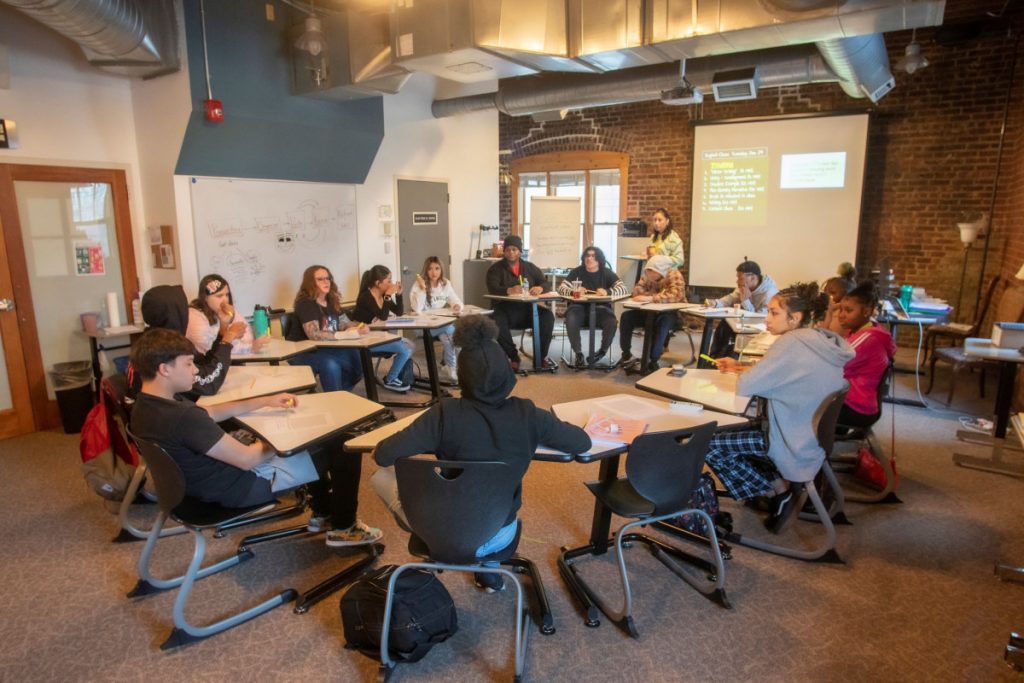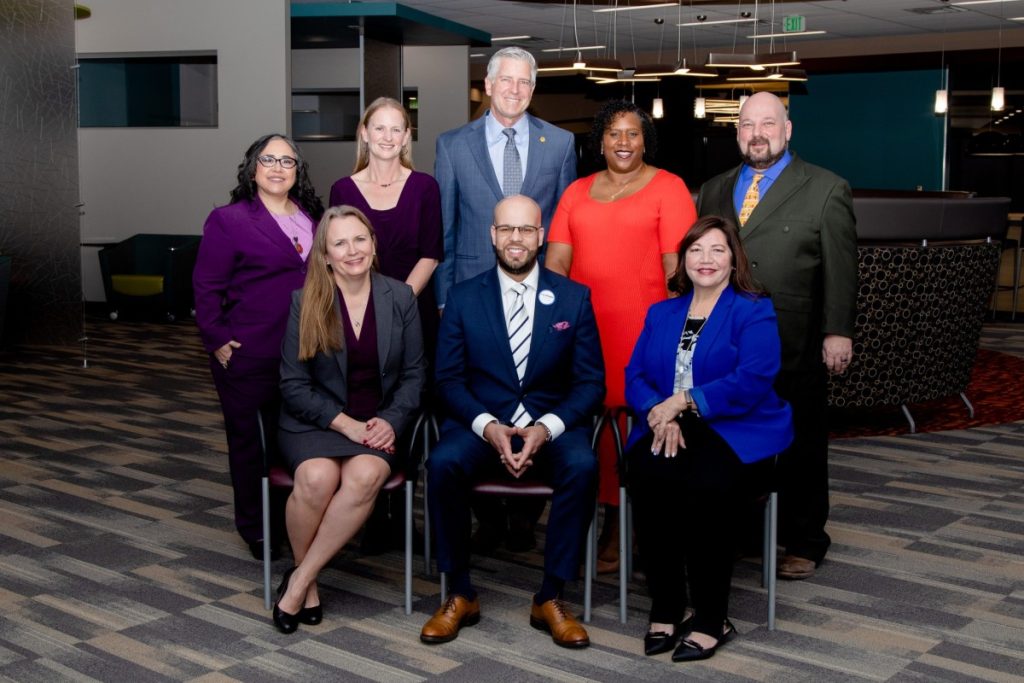I started writing about socioeconomic and racial segregation in Denver Public schools 28 years ago, when, as a Denver Post reporter, I covered the district’s decision to return to neighborhood schools after a federal court order mandating busing for integration was lifted in 1995.
The school board at the time, under pressure from both white residents and communities of color, drew school boundaries that consigned the city to a system of segregated neighborhood schools. The impacts linger to this day.
So I was happy to see the release of a new study on the issue earlier this month, produced by the Bueno Center for Multicultural Education at CU Boulder and the Latino Education Coalition. The study found that pervasive segregation in Denver schools disproportionately affects what researcher and co-author Kim Carrazco Strong describes as the “triple-segregated” – students who are Latino, working class, and English Language Learners.
“It’s all of those things coming together that are conspiring against these students,” Carrazco Strong told me in an interview. You can read a good synopsis of the study here, so I won’t go into details. The bottom line is that educational opportunities in Denver diminish for kids of color in segregated schools – and especially the ‘triple-segregated’ – compared to students in predominantly white schools.
These findings closely mirror those in a Civil Right Project study I commissioned in 2006, when I worked for The Piton Foundation. Schools resegregated as soon as busing ended. That resegregation has negative impacts especially on those triple-segregated students Carrazco Strong mentioned. Her research shows that the situation hasn’t improved since the 2006 study.
White students congregate in well-resourced schools in affluent white neighborhoods, especially in elementary schools. Many of these schools raise enough private dollars to hire additional staff to teach art, music and other ‘specials’ often missing from schools in lower-income areas. The inequities are glaring, and they are nothing new.
Although she approached the study as an academic researcher, Carrazco Strong said she found it challenging not to react emotionally to the findings. “Truth be told multiple times analyzing the data I started to cry. I’m so angry and offended at what is happening to students just like my daughter (who is being raised in a bilingual household), like my nieces and nephews.”
Why integration matters
Why might integration be important, beyond the obvious reason that people from diverse backgrounds need to learn how to learn and live together?
It has nothing to do with kids of color needing to sit next to white kids to learn. That’s not the case and has never been the case.
But schools where most families lack the social capital and political clout to force large, bureaucratic systems to respond to their needs and wants end up time and again with the short end of the stick. Richard Kahlenberg, one of the leading researchers on the benefits of school integration, has written about this extensively.
Mix in some families with the power and influence that often come with upper-middle-class privilege, and things can change quickly in schools. They don’t always change in ways that make families of color feel included (listen to the great podcast, Nice White Parents for some cringeworthy examples of this), but resources tend to flow to where people know how to manipulate the levers of power. And those resources can benefit all children in the school.
Neighborhood schools cause segregation
One thing is clear from this and similar studies: Anyone who says they are a strong proponent of both neighborhood schools and integrated schools in a segregated city is either fooling themselves or trying to fool you.
Almost all Denver school board members and candidates going back decades have championed neighborhood schools. That means they are also championing segregated schools, though many seem unaware of that fact. Unless and until Denver neighborhoods become truly integrated by race and income, we will continue to have segregated neighborhood schools.
You can have one or the other, but not both, at least in the current reality. Over the decades, decision-makers have chosen neighborhood schools over integrated schools.
Are there possible solutions? Sure. Rather than pushing primarily for integration strategies, Carrazco Strong calls for more resources for schools populated by students most in need. But that has been tried, with limited success, because big-city school districts’ dysfunction extends beyond anything money alone can fix.
Other, more radical solutions would require the kind of political courage that would almost certainly get a board member voted out of office after one term. Therefore, they are unlikely ever to be proposed, even by the most progressive politicians.
For example: What if schools in affluent Denver neighborhoods, where more than the district average of 21 percent of students are white, were required to reserve 30 to 40 percent of seats for kids from outside the attendance boundary? And what if the district offered free bus transportation to those schools for children eligible for subsidized school meals?
That might well be unpopular with everybody, but it also might work. It might also lead to another wave of white flight out of DPS.
Charter schools and segregation
For many years, a significant number of families in district-run high-poverty schools have been seeking better options. As the new study points out, some ’triple-segregated’ families have voted with their feet and left their neighborhood schools for nearby charter schools.
One finding of the study I found particularly interesting is that the charter schools in Denver that are segregated are most often disproportionately populated by students of color. In fact, 52 percent of Denver charters are segregated because they have high numbers of students of color. By contrast just 29.7 percent of district-run schools are segregated by disproportionate numbers of students of color.
Since charters are schools of choice – no one is assigned to them – this means families of color in significant numbers are shopping around and choosing these schools for their children. Far fewer charter schools are segregated by a disproportionate number of white students (15.8 percent) than is the case with district schools (25.5 percent).
Why? Probably because many white DPS families are getting what they want out of their neighborhood schools.
I’m not sure exactly what conclusions to draw from this data, other than this type of segregated charter school – caused by low-income families of color seeking better educational opportunities for their children – is not the same as segregation forced on people because of their zip code.
Parental choice matters, especially for those families who face limited choices in so many aspects of their lives.
After studying this issue for almost 30 years, I’m not convinced that it will ever be resolved. Colorado is a state where by law parents can send their children to any school where there is space available. Districts like DPS cannot mandate attendance at any particular school.
And who would want that kind of command and control anyway, especially given the current district and board leadership?
Encouraging integration by offering dual immersion Spanish-English language programs, or placing great magnet programs in low-income neighborhoods (as the Wake County School District in North Carolina did some years ago), has worked to some extent in Denver and elsewhere. Why not try or double down on those strategies here?
Responding to the study, DPS Superintendent Alex Marrero pledged to Chalkbeat that he would produce a plan by next summer to reduce segregation. It will be interesting to see what he proposes.
We will be watching and waiting eagerly.




